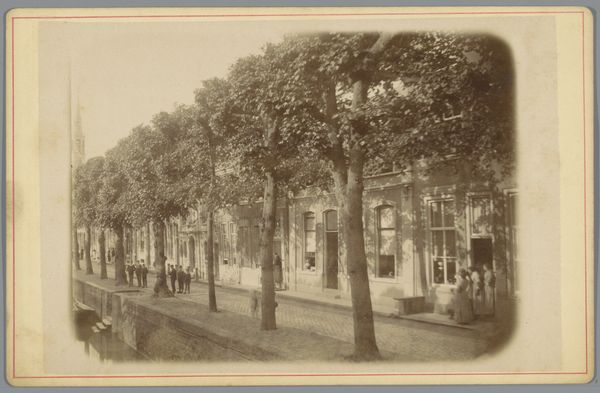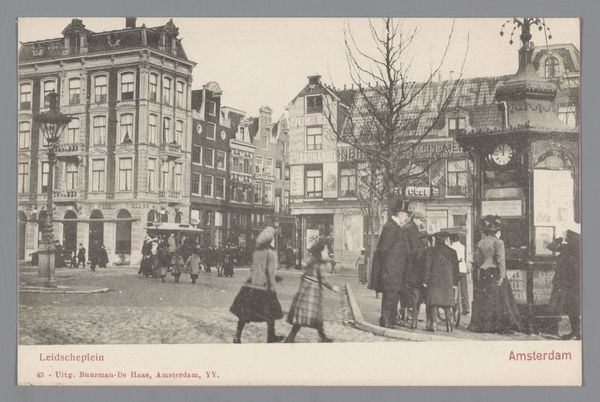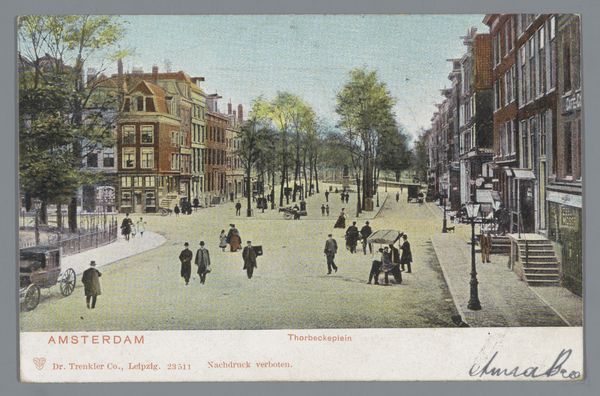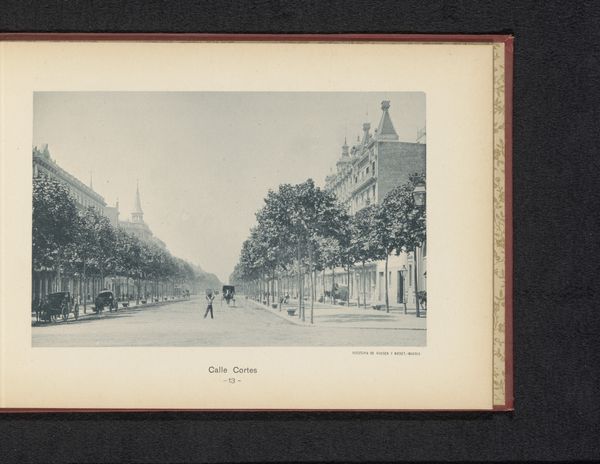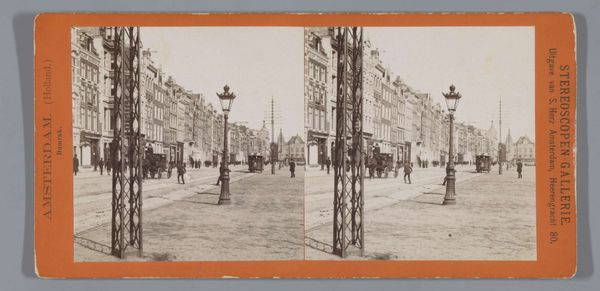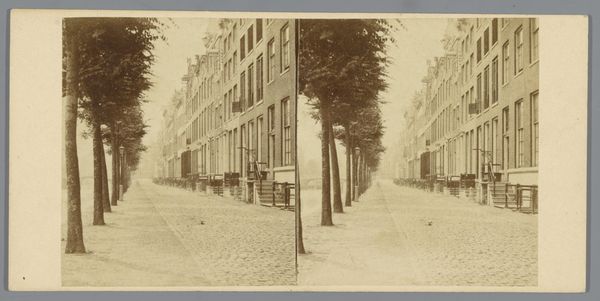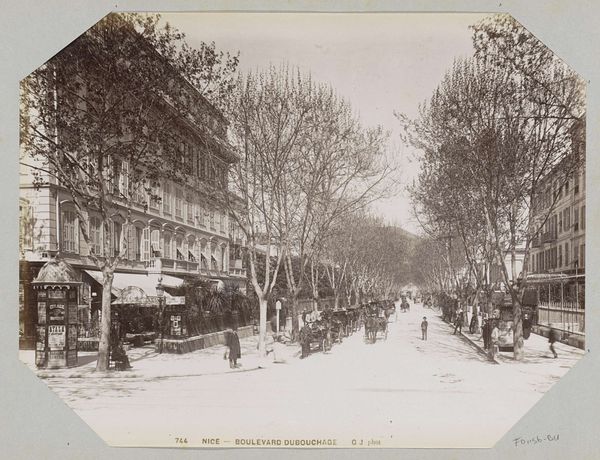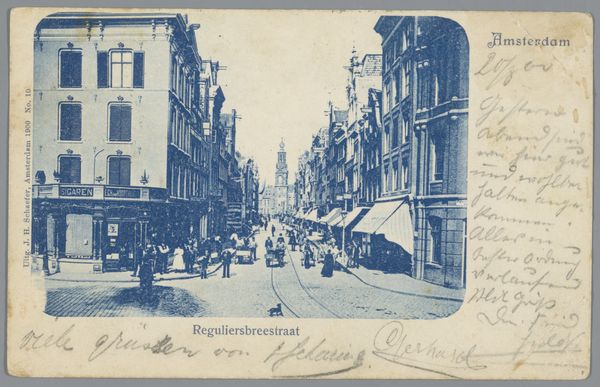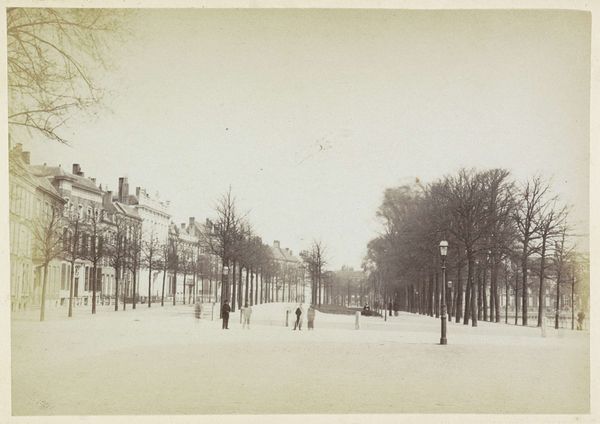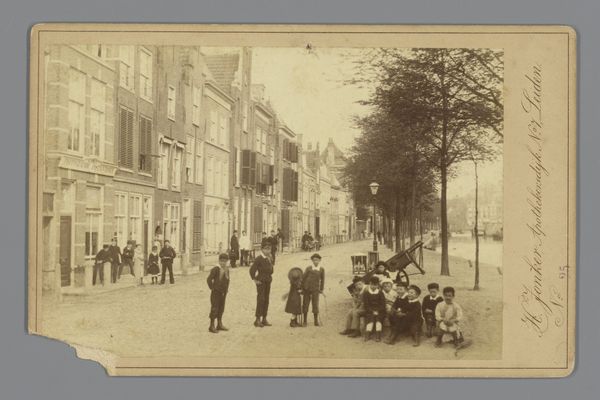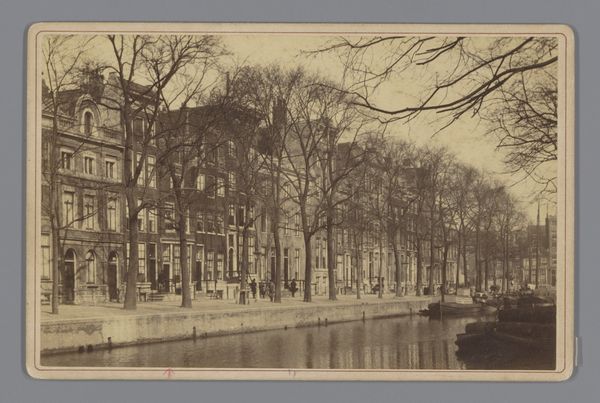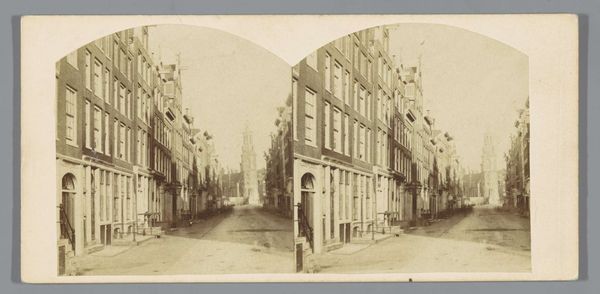
photography, albumen-print
#
photo restoration
#
landscape
#
street-photography
#
photography
#
historical photography
#
19th century
#
cityscape
#
street
#
albumen-print
#
statue
Dimensions: height 90 mm, width 140 mm
Copyright: Rijks Museum: Open Domain
Curator: Here we have an albumen print simply titled, "Fred. Hendr. Straat, Amsterdam." It's difficult to be certain, but this image likely originates between 1875 and 1930. Editor: It feels like stepping back in time. There's a serene quality to it, almost dreamlike, despite being a bustling city street. It is beautiful, and feels familiar, like a place I knew once in a different life. Curator: It's fascinating how the albumen print, a process involving coating paper with egg white, gives the photograph such a distinct tonal range and surface quality. You see that richness particularly in the shadowed areas and textures of the buildings. The uniformity of the facades reflects particularities with building material consumption and design of the period, wouldn't you agree? Editor: Absolutely. And beyond the materials, consider the human element. The children holding hands in the foreground add a touch of intimacy. I'm curious about their story and how this particular moment felt to them as inhabitants of this space. There is joy and a beautiful calmness, especially given the long shadows, indicating the scene may be from dusk, when children often get tired. It brings the image to life. Curator: The technical constraints of early photography also impacted how these scenes were constructed. Longer exposure times often necessitated stillness and deliberate compositions to avoid motion blur. The labor of early street photography also has much to say about urban and art histories. Editor: Yet, despite these constraints, the photographer manages to capture something so fluid and lively. I'm left with this lingering sense of nostalgia and a whisper of untold stories within those streets. What remains for you when you consider how streets and even monuments or buildings speak to urban histories? Curator: It highlights how urban planning, material resources, and technological innovation are interwoven to shape lived experience and create places we may only have the privilege of knowing through art and visual representation. Thank you. Editor: Thank you, for helping us consider and feel the many ways the photograph acts on us.
Comments
No comments
Be the first to comment and join the conversation on the ultimate creative platform.

